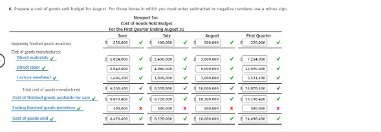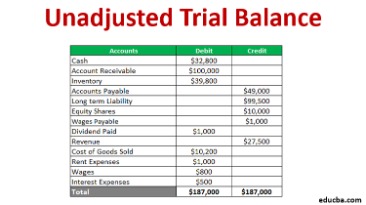
The accrual method records payroll expenses in the month they are incurred, regardless of when the expenses are paid in cash. The matching concept presents a more accurate picture of company profit. Payroll liabilities are any type of payment related to payroll that a business owes but has not yet paid. A payroll liability can include wages an employee earned but has not yet received, taxes withheld from employees, and other payroll-related costs. If you prepare a balance sheet for your beginner’s guide to financial statements business, you’ll record payroll liabilities as wages payable and taxes payable under current liabilities. Current liabilities include your short-term expenses, which you expect to pay off in 12 months or less.
- There are a few things you can do to stay on top of them.
- Accrued wages for a certain period are recorded at the end of your accounting period.
- If you use software, you don’t have to worry about wage or tax calculations.
- Unpaid employee wages make up the largest part of your pay-related liabilities.
- You may need to handle health insurance contributions, retirement fund contributions, or wage garnishments.
Payroll liabilities vs. payroll expenses
Unpaid employee wages make up the largest part of your pay-related liabilities. If you hire hourly employees, this amount can change each pay period based on how many hours each employee works. In contrast, payroll expenses refer to the payroll-related costs you’ve already paid.
It’s a valuable tool that shows you your upcoming expenses. The purpose of payroll accounting is to keep track of employee compensation and related payroll costs. Recording these costs can give small business owners an accurate picture of their expenses. You may find that hiring an accountant or bookkeeper to record these transactions can help you spend more time working on your business. Now that you understand the difference between payroll liabilities and expenses, keeping track of both will be much easier. If you want to streamline your payroll management even further, explore Hourly payroll software.
It also shows you whether you’ve paid your liabilities or not. Put simply, anything you need to withhold from an what is invoice factoring employee’s check and deposit elsewhere is considered a payroll liability until you deposit it. After you’ve paid it, it gets recorded as a payroll expense in your books. The accrual method posts payroll liabilities and expenses in the same period. In the restaurant example, a $3,000 wage expense and a $3,000 wage liability balance are posted on March 31.
Payroll expenses are the costs incurred due to day-to-day running a business. Small businesses rarely record this liability in their books. But business owners should keep in mind how many hours they’ll need to pay out in the future. For instance, a small business with one or two employees may not offer 401(k) matching or even health insurance. By contrast, some employers may have additional accounts to add, like a fitness credit or education reimbursement. Pay your employees their wages depending on your frequency and the payment method (e.g., direct deposit).
What Are Payroll Liabilities? Definition, Types & How to Track
This article has provided some insights into how these costs can impact your company’s bottom line if not managed properly. Hopefully you now have a better understanding of payroll liabilities and expenses. For companies that hire employees, payroll liabilities are a very important part of their expenditure. Understanding how these work and keeping track of them will help you manage your business more efficiently. If you decide to hire employees immediately, then you will have to pay them wages in advance.
What Are Payroll Liabilities?
This goes back to journals 2 and 3 where you’re recording all taxes you’ve paid. These include taxes the employee is paying via their withholdings each pay period, as well as taxes the business owes. But a record of tax payments will show unemployment taxes listed alongside any taxes the employee paid. It might feel like there are a hundred kinds of payroll taxes.
Say your employee Jane earns 0.05 PTO hours for every hour of work. If she works 40 hours in a pay period, she will accrue two hours of PTO (40 hours worked x 0.05 PTO rate). Therefore, outsourced accounting and bookkeeping you’d record a $20 liability in your PTO Liability account ($10 hourly rate x 2 hours PTO). At first blush, it might seem nonsensical to track employee PTO in dollars and cents.
What is a payroll journal entry?

This distinction is important because of the way businesses track their finances. Most businesses use an accounting system called the accrual method. Another way to track your liabilities is to use payroll accounting. Payroll accounting gives you a clear record of your liabilities, including wages and taxes.

Nejnovější komentáře